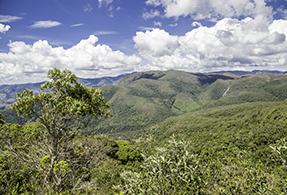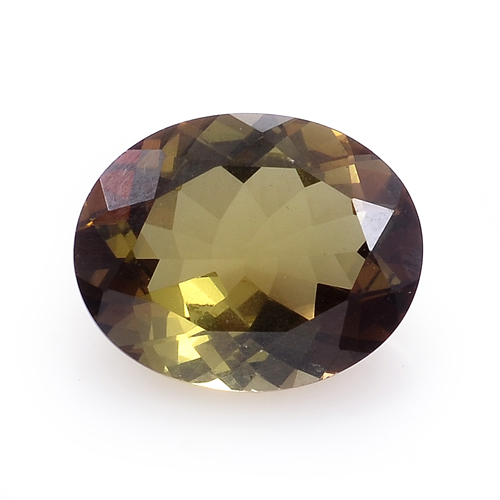Andalusite: Jenipapo
Andalusite derives its name from the Spanish province where it was first sighted in 1789. Its play of red, green and yellow hues resembles a muted iridescence with adaptable color tones.
Andalusite's ability to exhibit a variety of hues in a single stone, including light yellow-brown, olive, dusty rose, and gray-green, renders it difficult to pin down a leading color. This is a gem that displays pleochroism, meaning that it appears different colors when viewed from different angles. While gemcutters typically try to focus in on a single shade for other gemstones, they prefer to showcase andalusite's transitional ability by choosing gem material with a good mingling of hues. Andalusite has traditionally been a collector's gem and a rare find. While difficult to acquire in small jewelry shops, artisans are beginning to introduce this stone into their creations.
- Crystal healers credit andalusite with improving intelligence, assisting with memory and resolving issues.
- This gemstone is said to help its wearer understand the concept of 'everything in moderation,' facilitating balance, and helping you remain grounded.
LOCATION: Brazil
Brazil takes pride in its production of exquisite andalusite. We obtain andalusite from the Jenipapo mines in the Minas Gerais territory of Brazil.

- Ranks 7 to 7.5 on the Mohs hardness scale.
- Strong pleochroism makes it difficult to pinpoint the color of this stone, but its overall appearance is that of a dusty peach, pink, red-brown or light orange-brown.
- Sourced from Minas Gerais in Brazil.
- Member of the andalusite-kanonaite family.
- Also known as chiastolite, viridine, andaluzite, apyre, feldspath apyre, jamesonite, or lohestite.
- 100 percent natural stone; no additional treatments.





